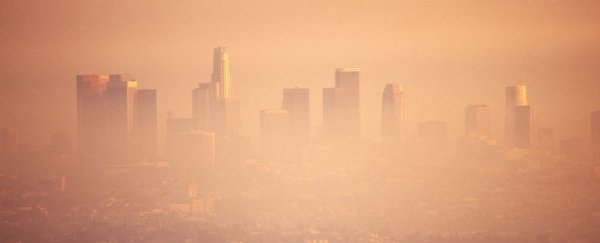In the last two decades, the Anthropocene has become an informal buzzword to describe the numerous and unprecedented ways humans have come to modify the planet.
As the concept has become more widely adopted, however, definitions have begun to blur. Today, the very meaning of the Anthropocene and its timeline differs considerably depending on who is doing the talking.
To geologists and Earth system scientists, the Industrial Revolution is often considered the dawn of the Anthropocene – when human influence on Earth's systems became predominant worldwide.
Many anthropologists, historians, and archaeologists, however, consider the 18th century as more of a sunrise, when the era of humans truly began to heat up in some regions. Before that, there were already glimmers of human domination on the horizon.
Since the Late Pleistocene, right through to the Holocene (our current epoch), humans have been producing "distinct, detectable and unprecedented transformations of Earth's environments," states a new paper on the subject.
And while these changes might not be enough to be technically defined as a new geological epoch, we need terms to describe this earlier influence, too. Because right now, people from various disciplines are using the term with subtly different meanings.
"Dissecting the many interpretations of the Anthropocene suggests that a range of quite distinct, but variably overlapping, concepts are in play," says geologist Colin Waters from the University of Leicester in the UK.
Thousands of years before the boom of industrialization, globalization, nuclear bombs, and modern climate change, humans were already in the first stages of becoming a dominant planetary force.
The rise of crop domestication and hunting, the spread of livestock and mining, and the move to urbanization, have all caused great changes to Earth's soil signature and its fossil record, setting us on a course to the modern day.
As far back as 3400 BCE, for instance, people in China were already smelting copper, and 3,000 years ago, most of the planet was already transformed by hunter-gatherers and farmers.
While these smaller and slower regional changes did not destabilize Earth's entire system as more modern actions have, some researchers think we are underestimating the climate effects of these earlier land-use changes.
As such, some have considered using the terms "pre-Anthropocene" or "proto‐Anthropocene" to describe significant human impacts before the mid‐twentieth century.
Others argue a capitalized "Anthropocene" should represent the tightly defined geological concept of an epoch, while the uncapitalized version should be used for broader interpretations.
Even after the Industrial Revolution, when human influence is clear to see, some argue we need to define further advances of the Anthropocene.
The "Great Acceleration" of the mid-twentieth century, for instance, has been proposed as a "second stage" to the Anthropocene, when human enterprise and influence began growing exponentially.
This second stage not only encompasses rapid geological changes, but it also refers to socioeconomic factors and modern biophysical processes that humans have also begun to alter with our actions.
"This shows an exemplar of ways in which ideas and terms move between disciplines, as is true for the Anthropocene," researchers write.
It's unclear what the next stage of the Anthropocene will look like, but many of the changes we have made are currently irreversible and may continue long after our species is gone.
Still, the authors argue, one thing is clear. The exceptionally rapid transformations humans have made to our planet since the Great Acceleration "vastly outweigh" earlier climactic events of the Holocene.
"Given both the rate and scale of change marking the onset of the chronostratigraphic Anthropocene, it would be difficult to justify a rank lower than series/epoch," the authors conclude.
The study was published in Earth's Future.
